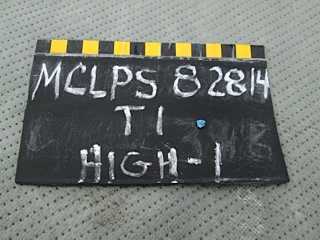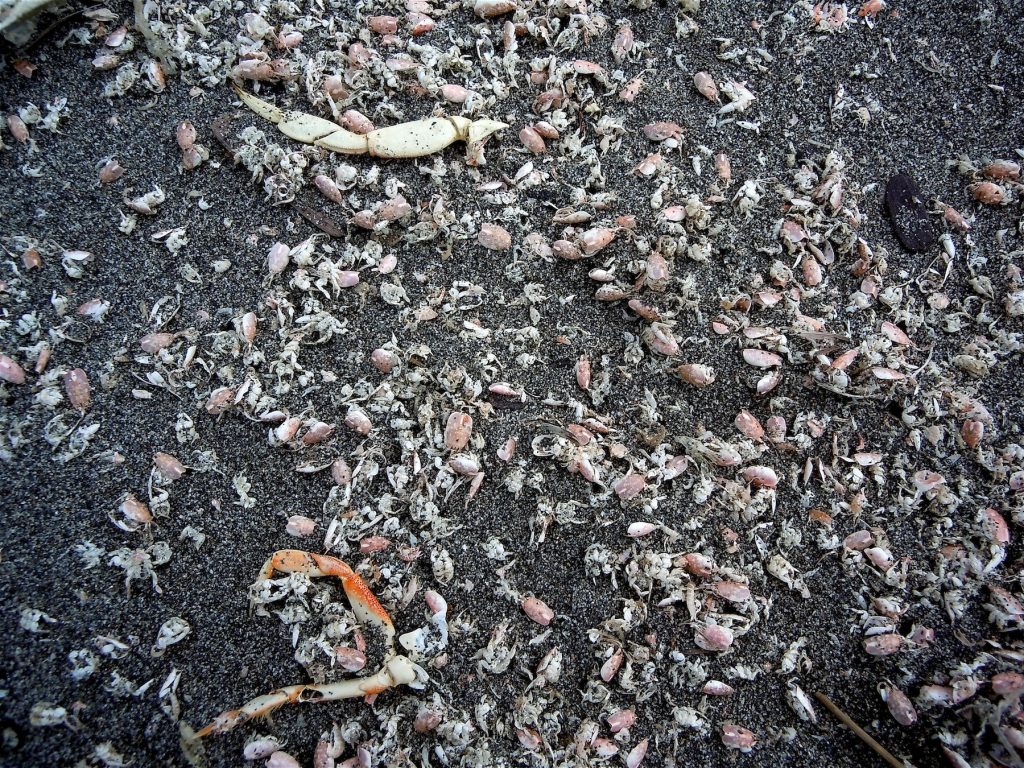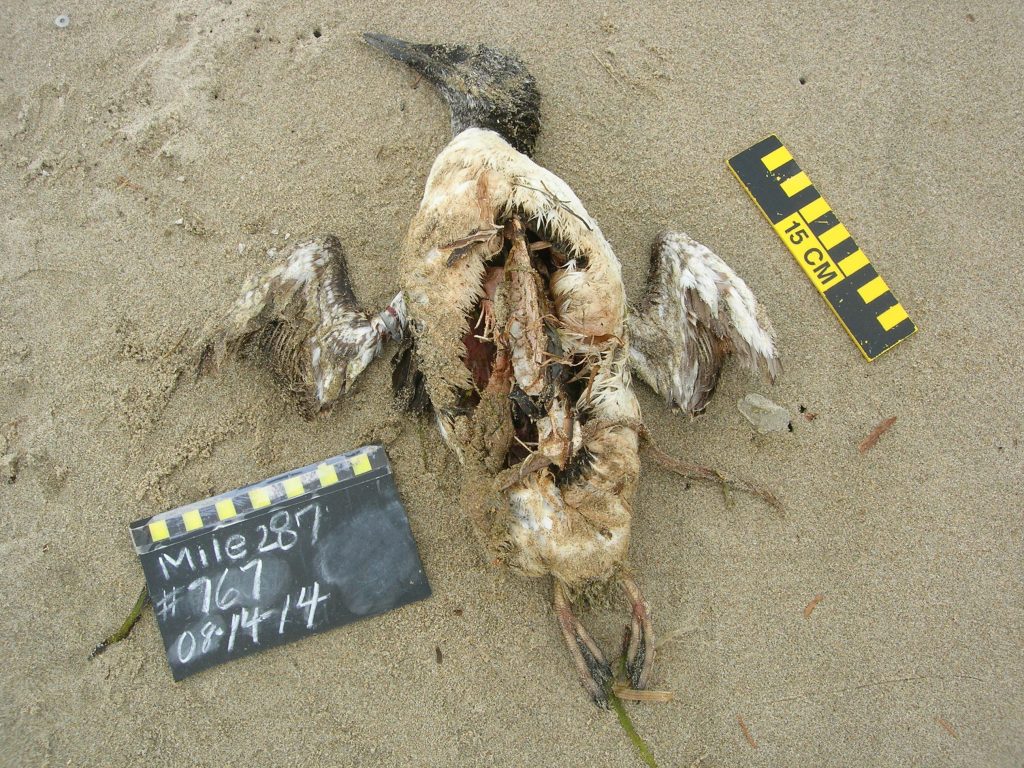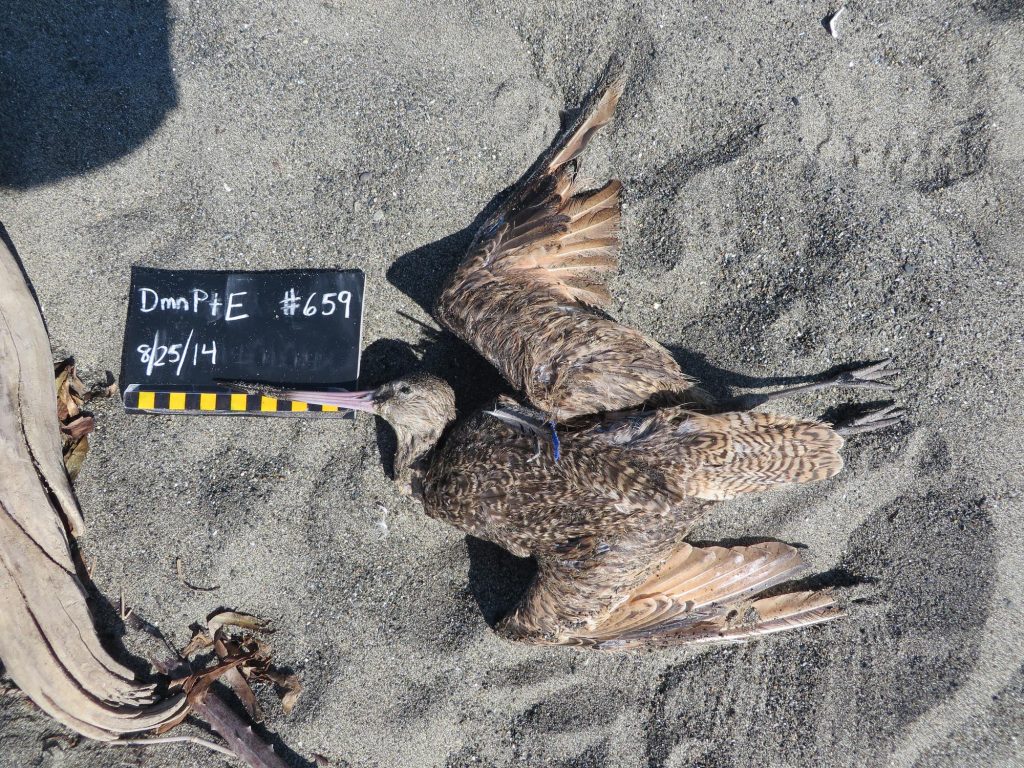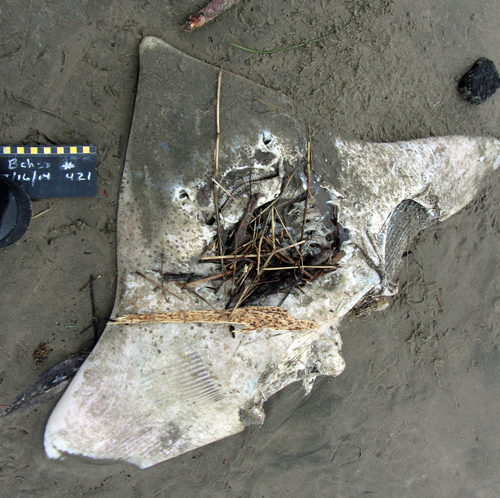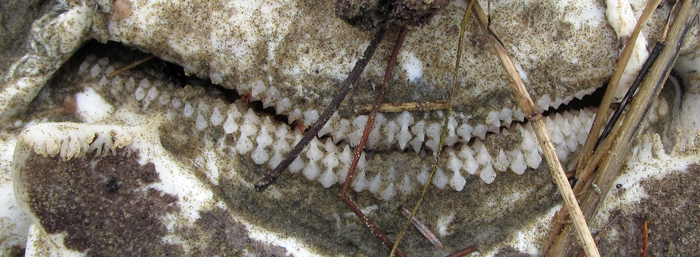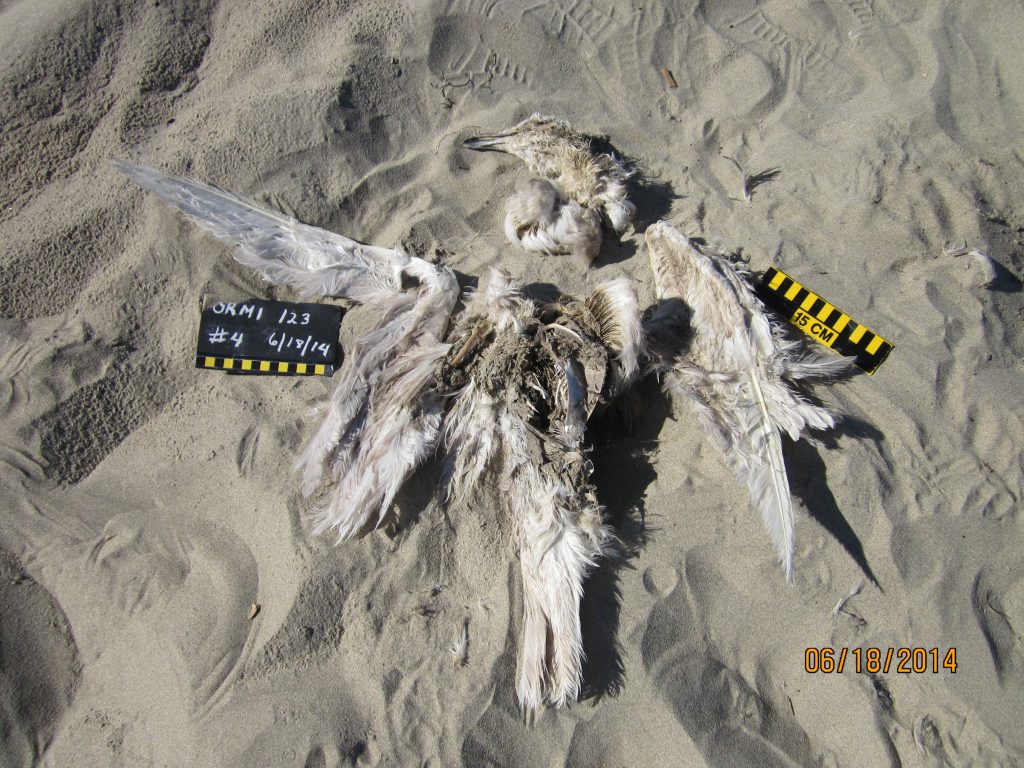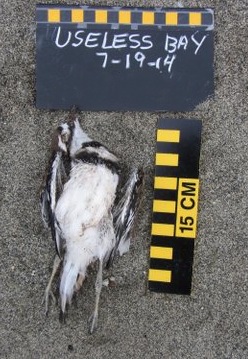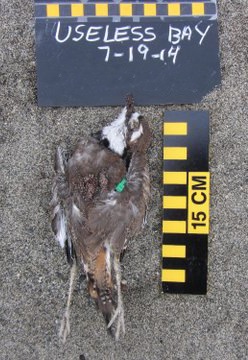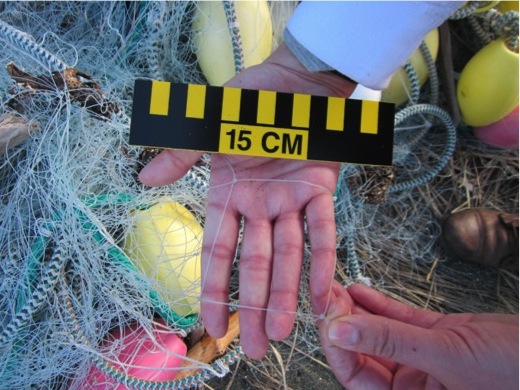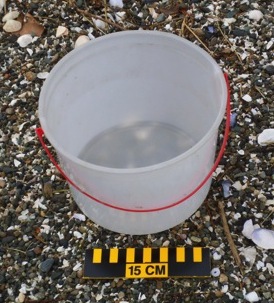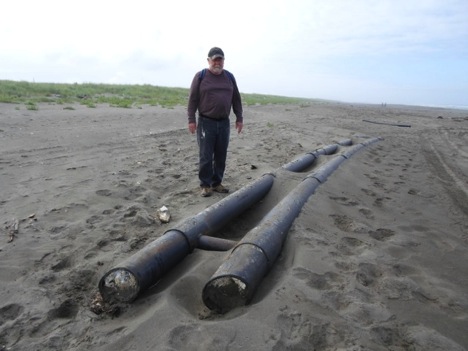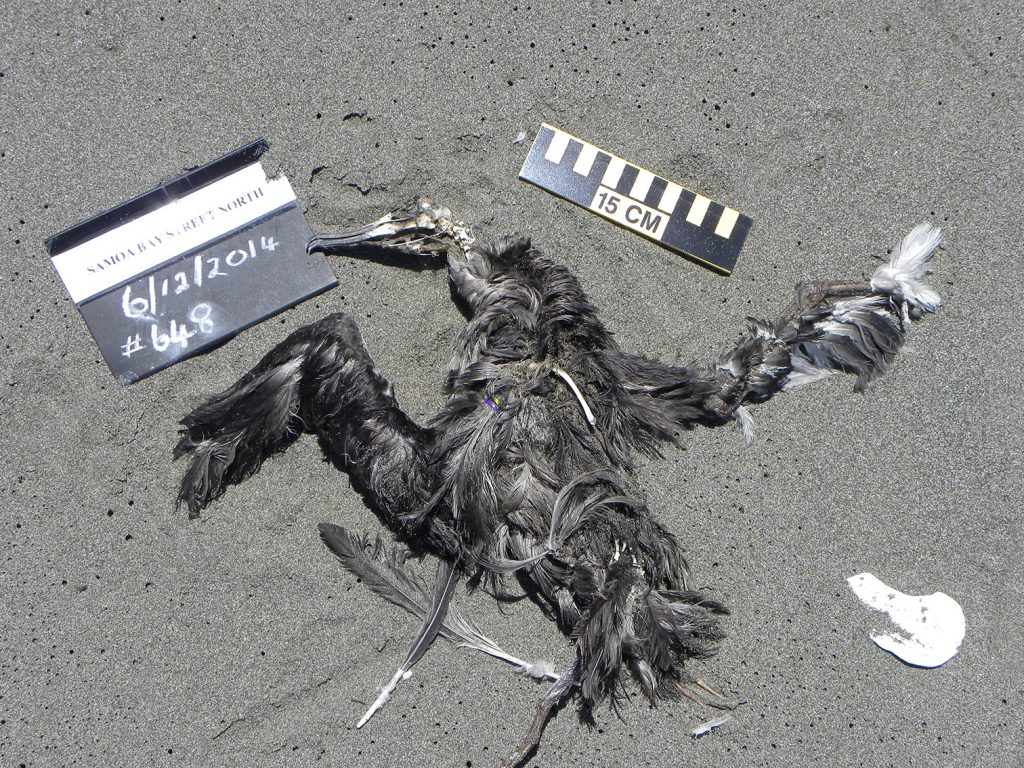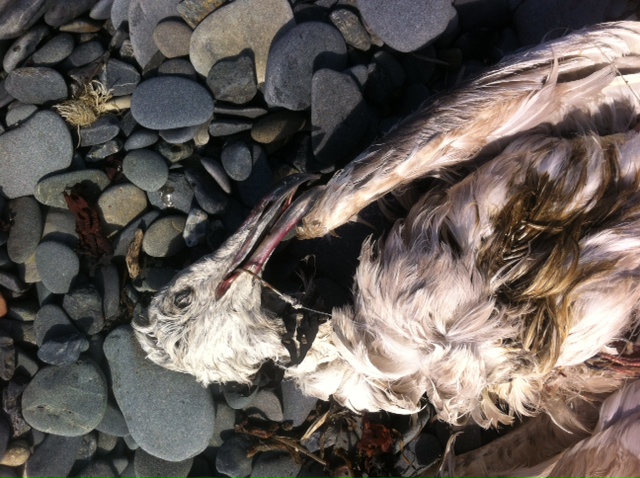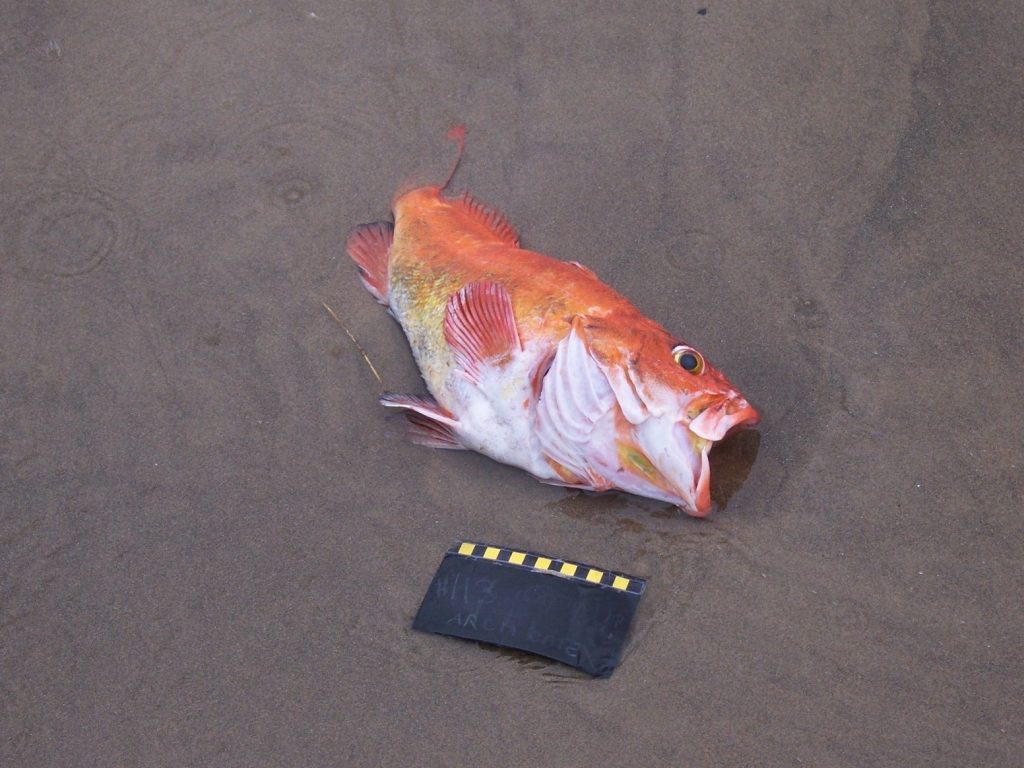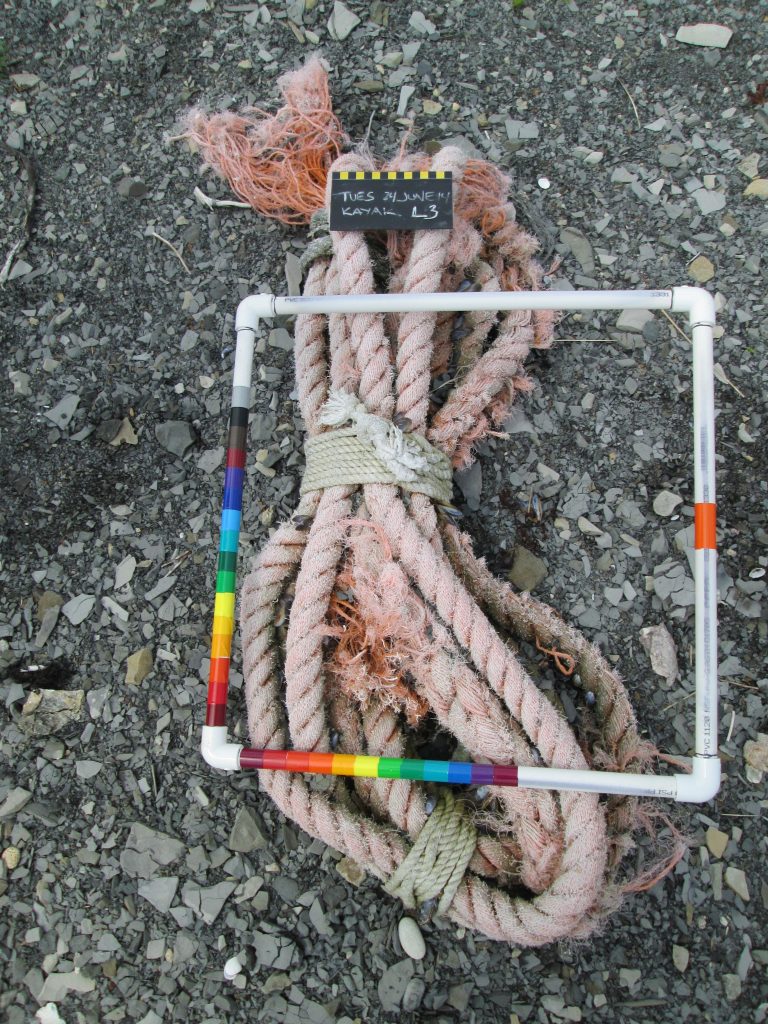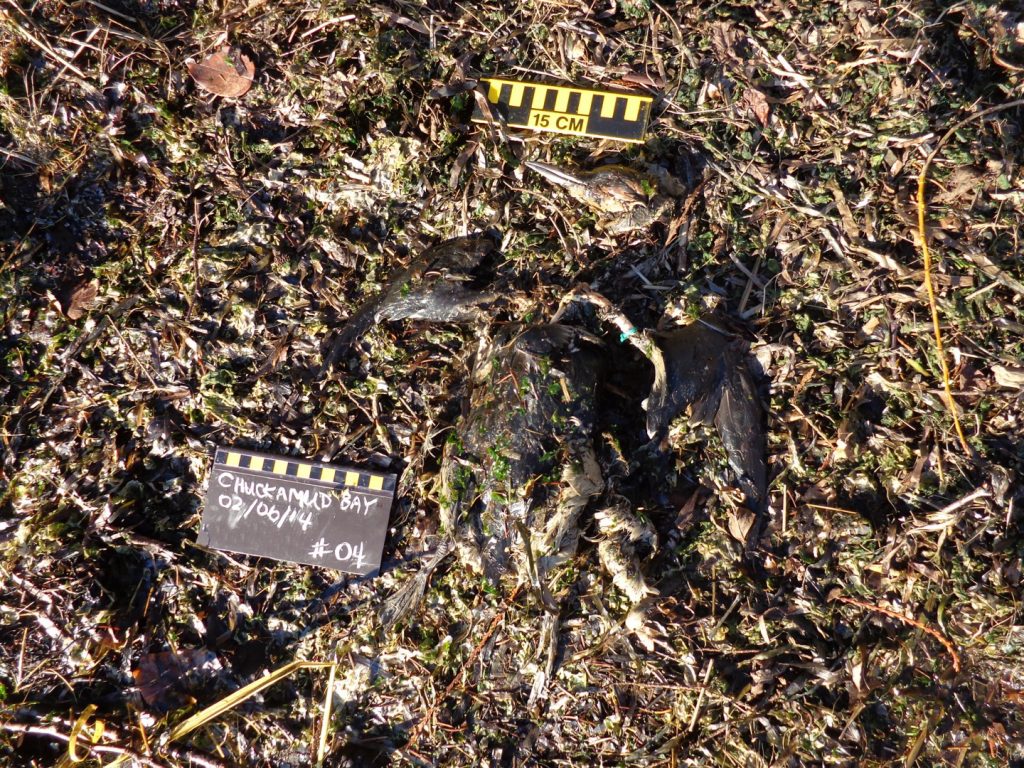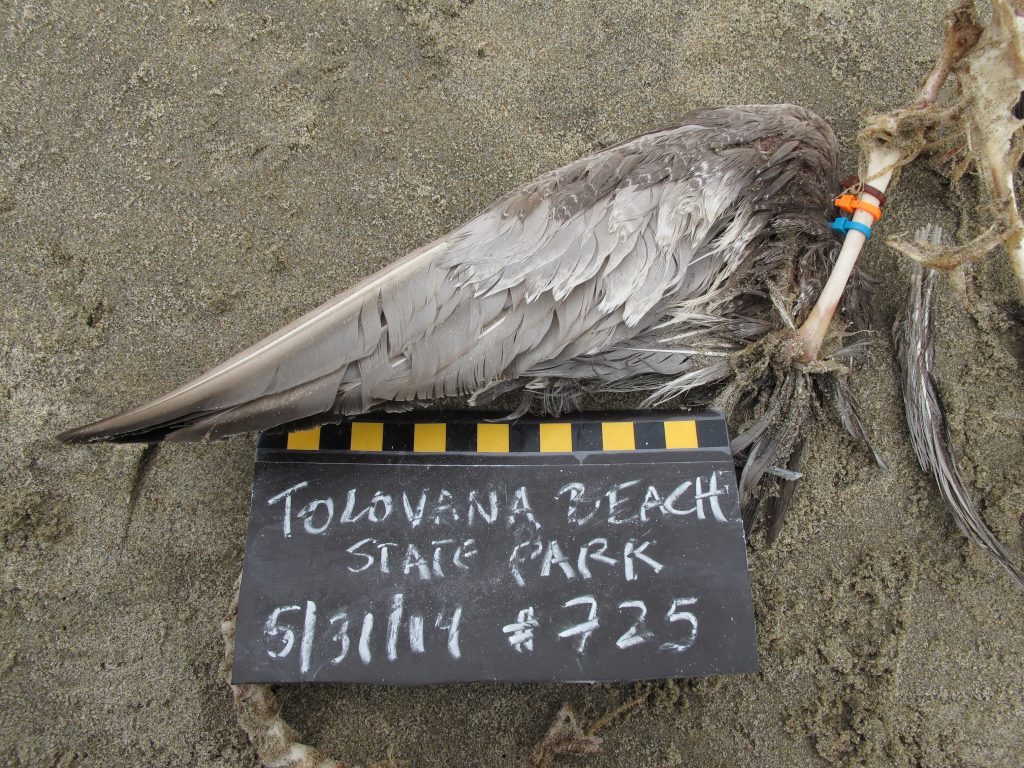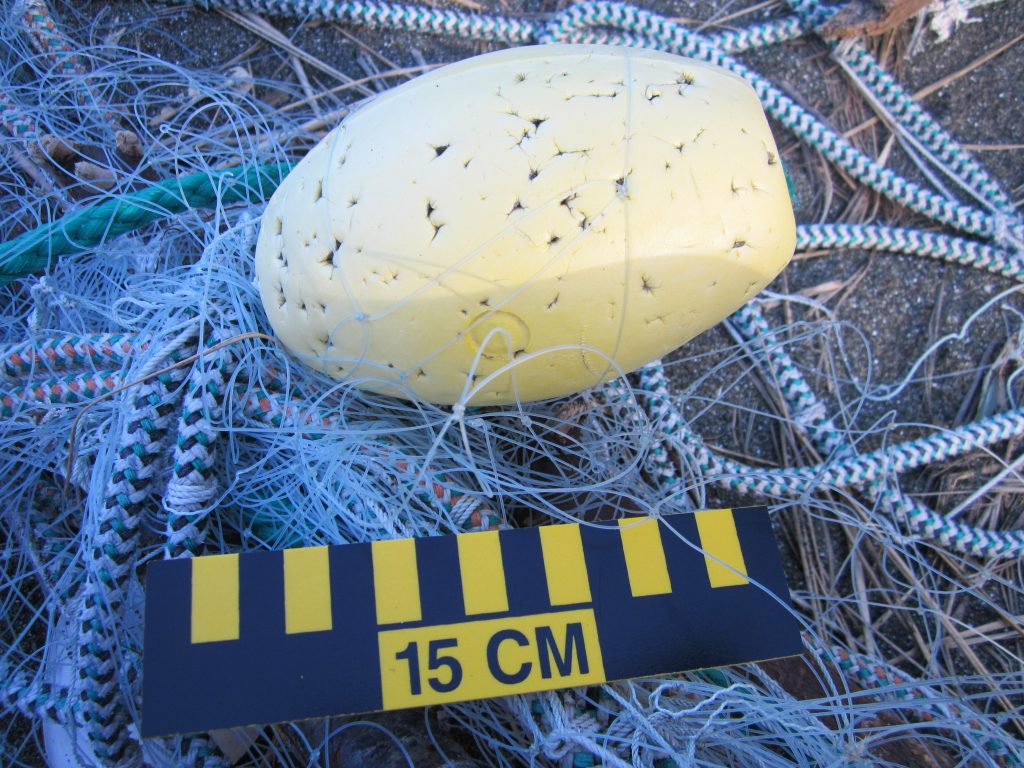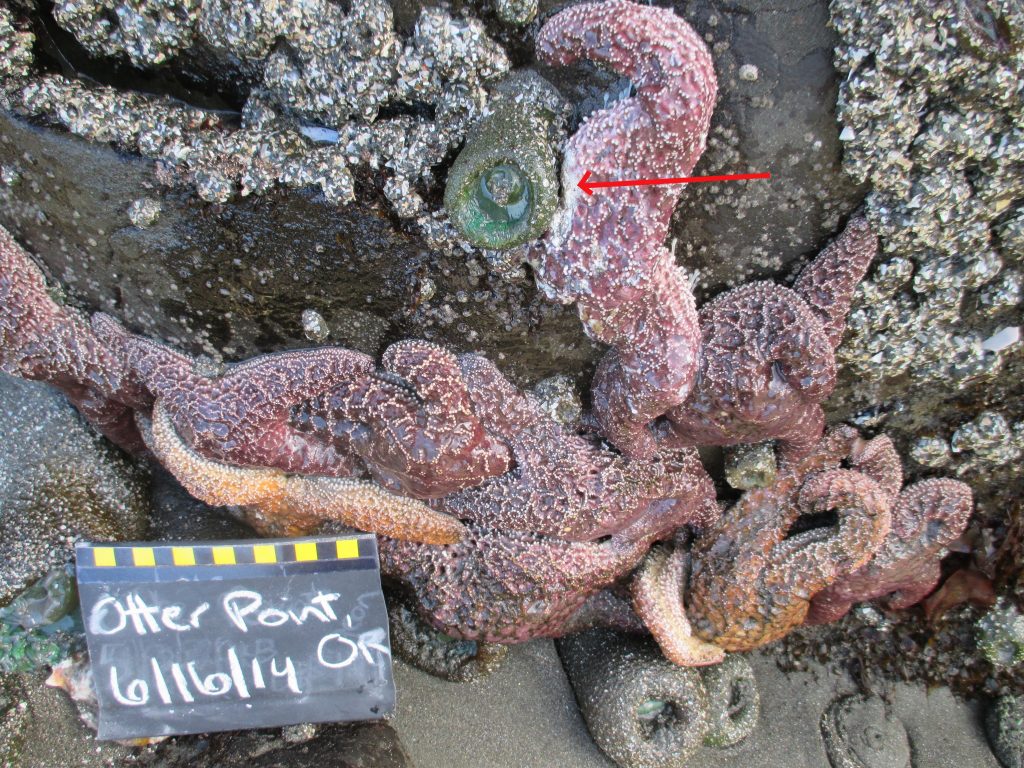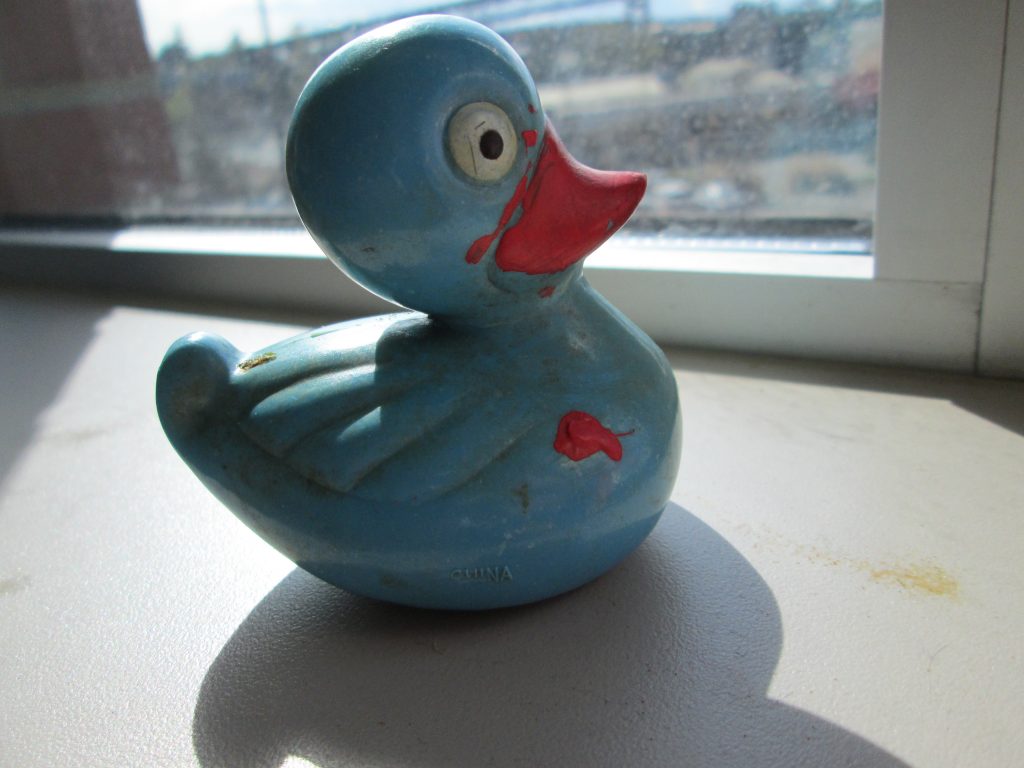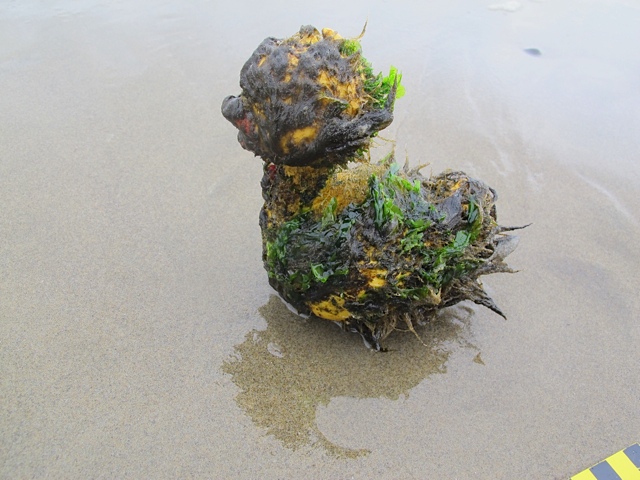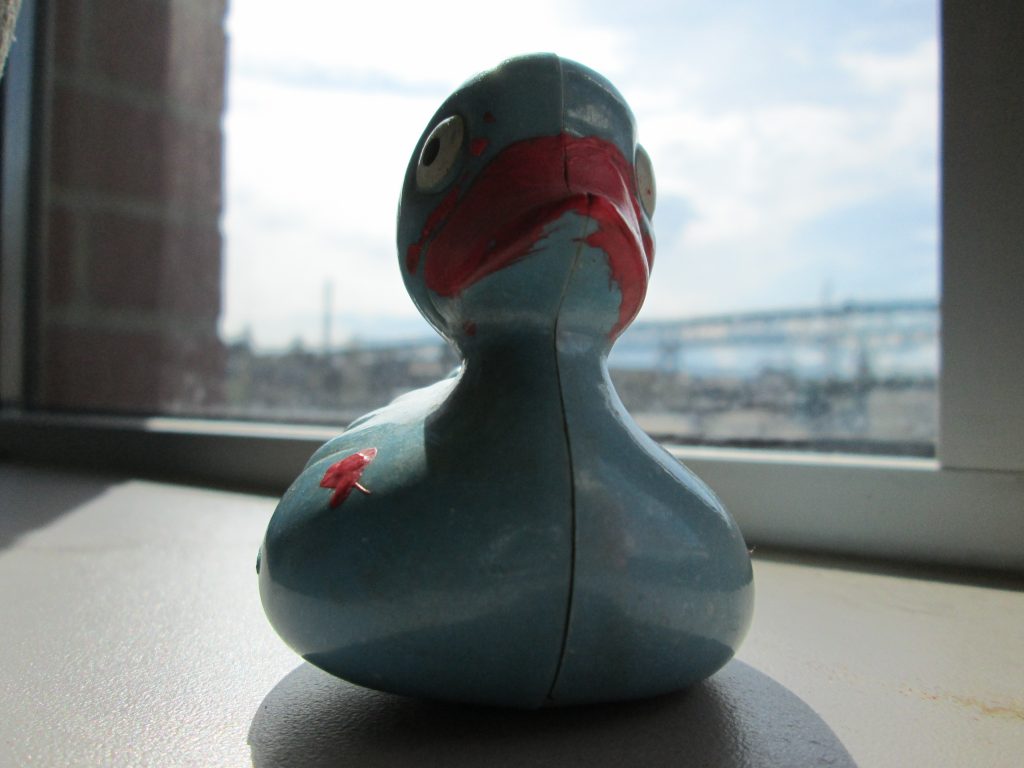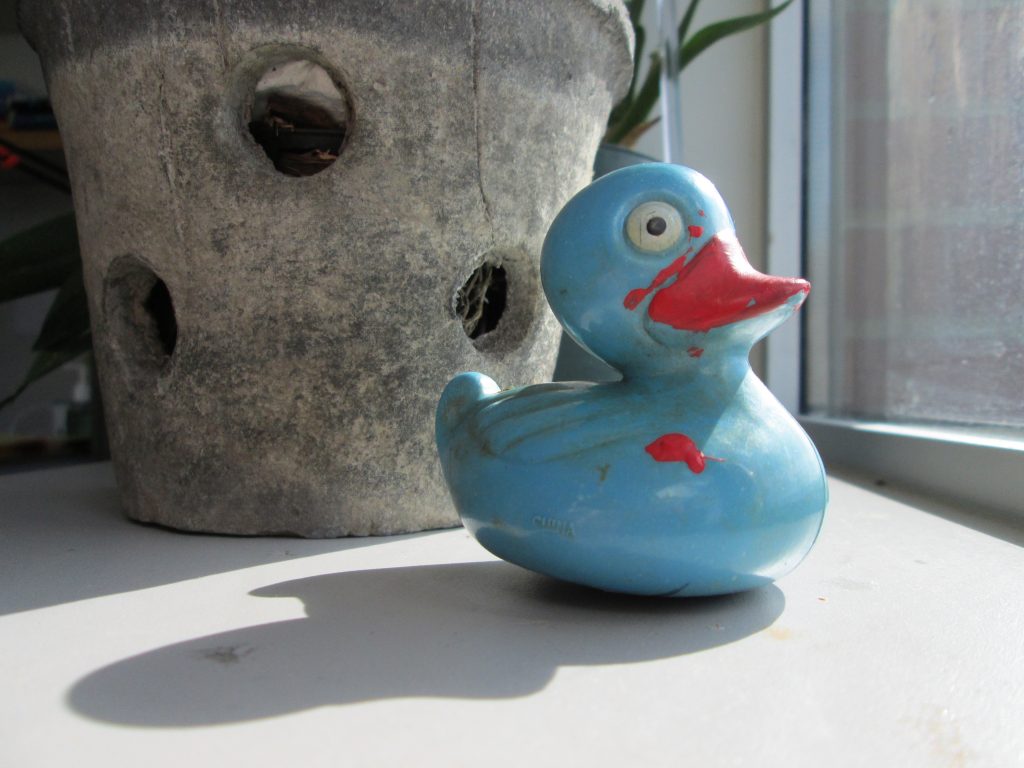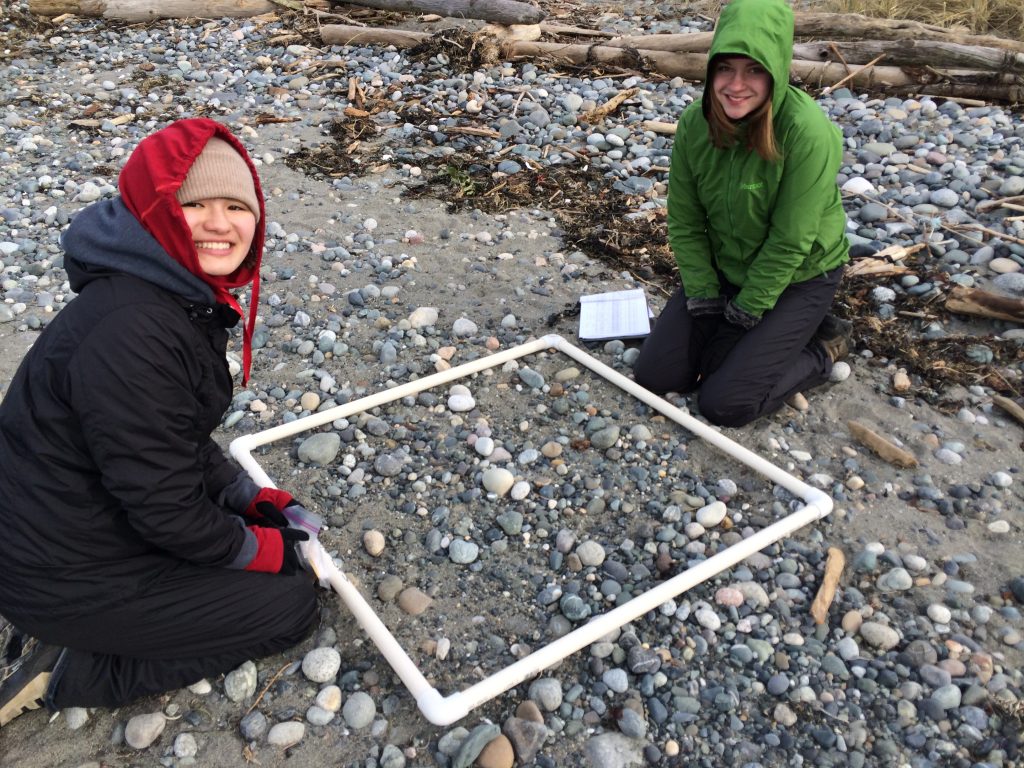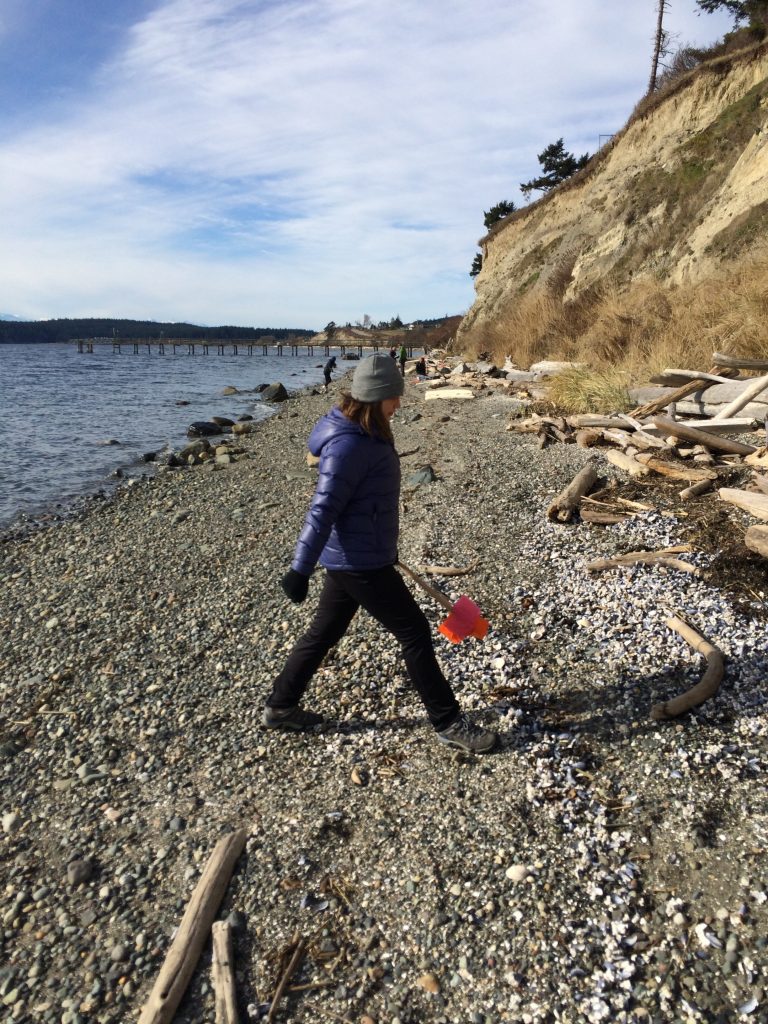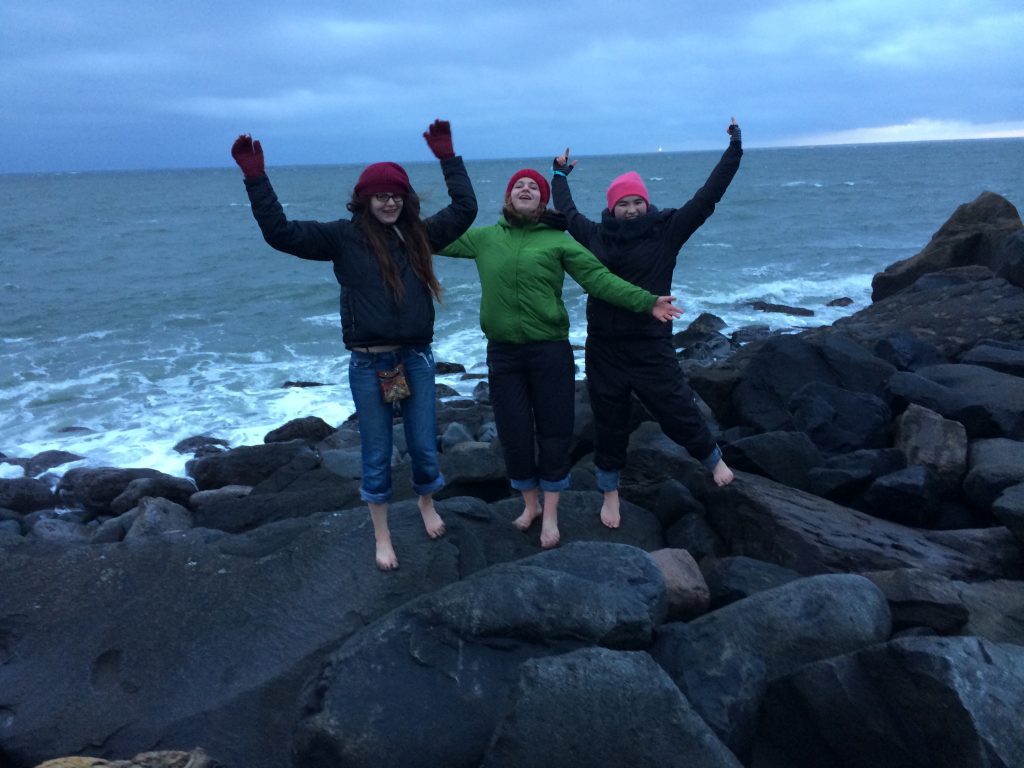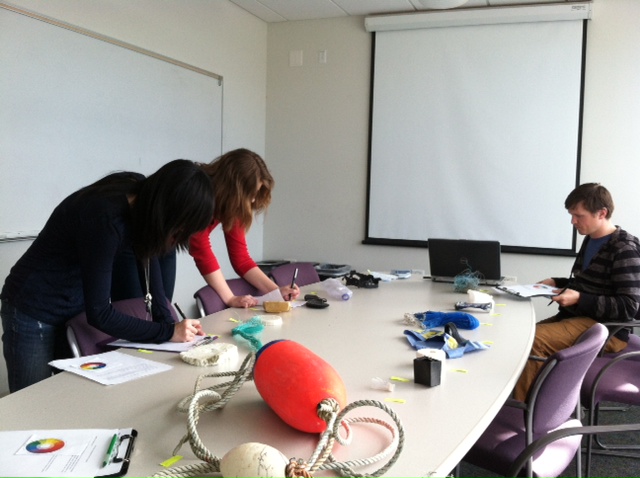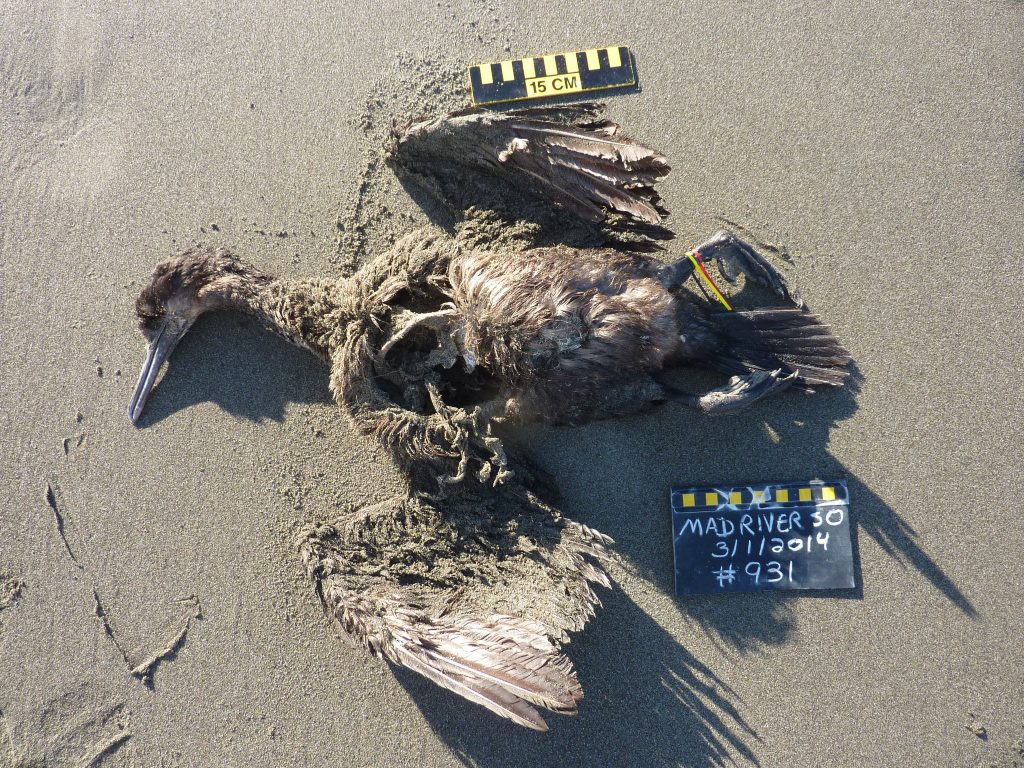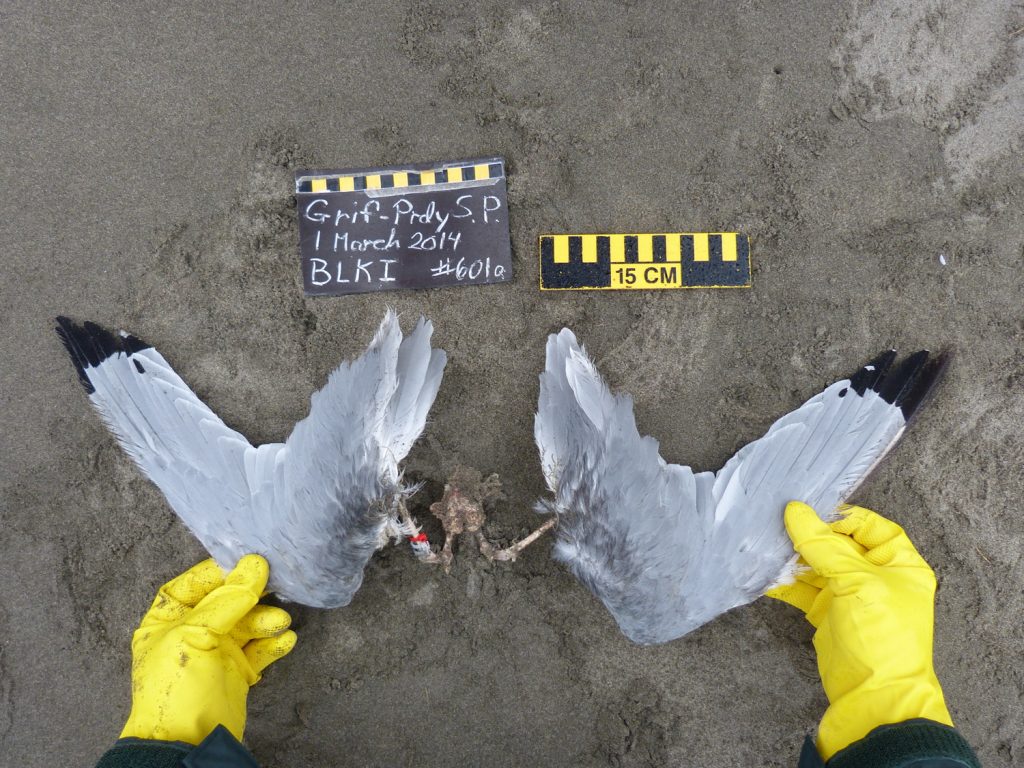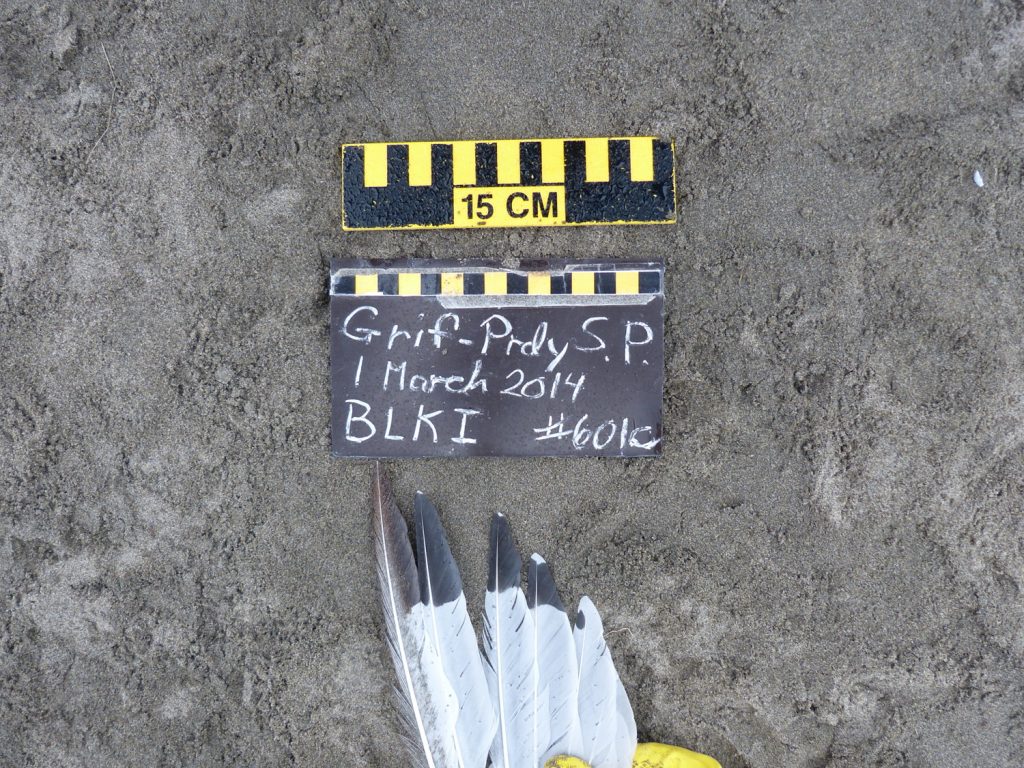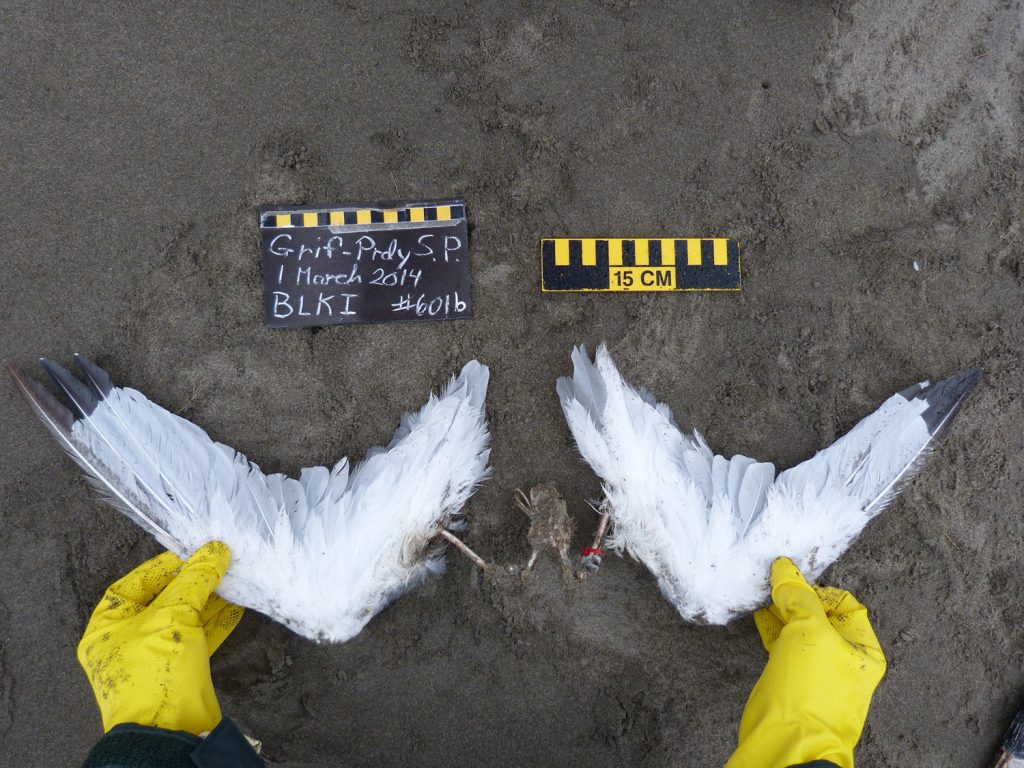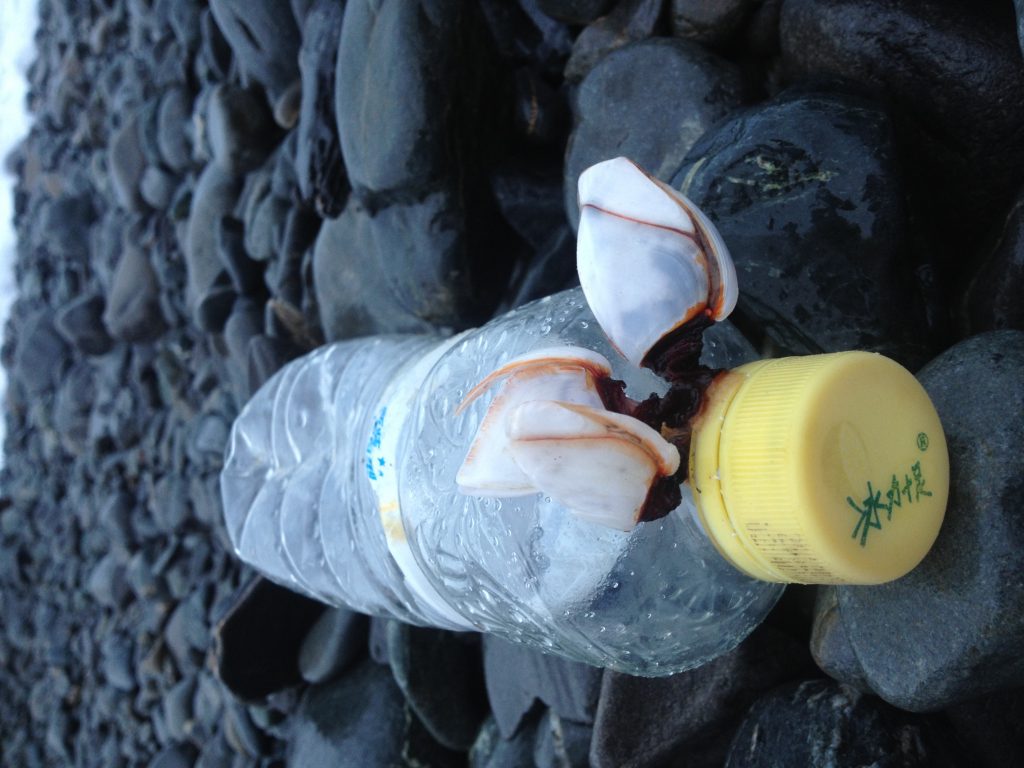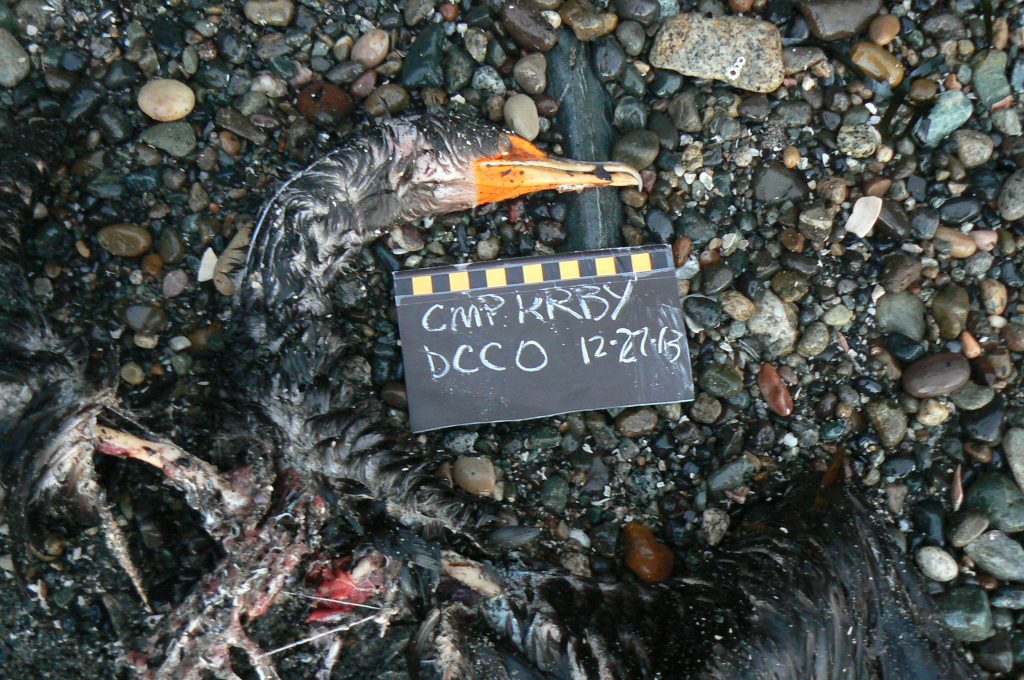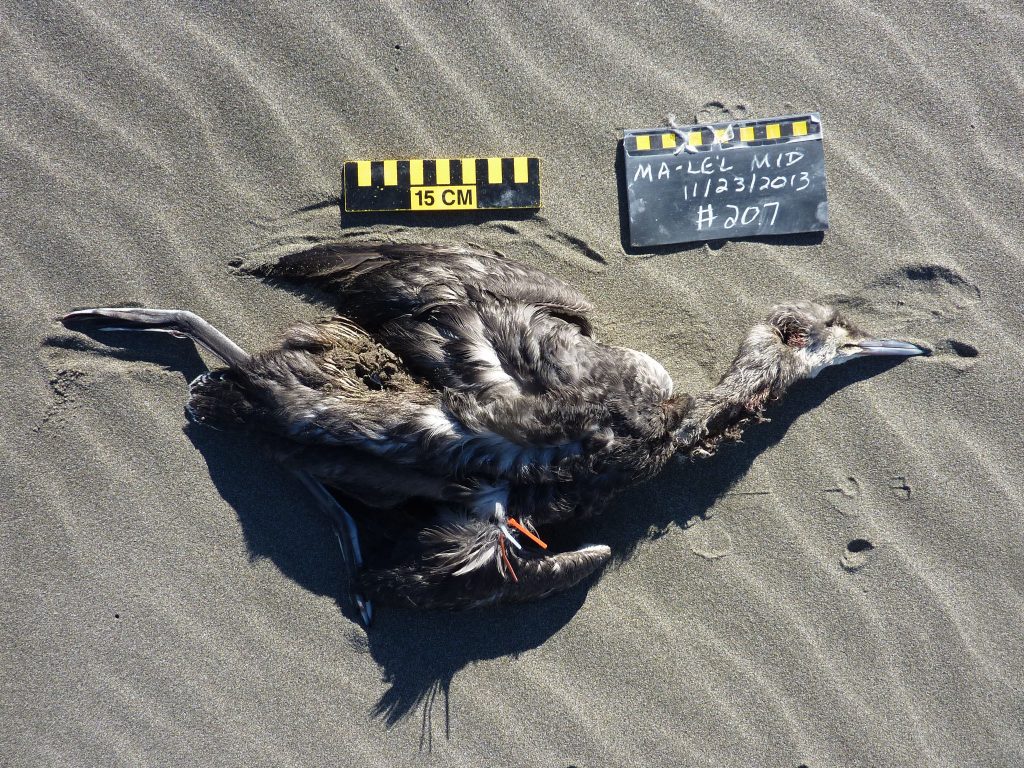It’s hard to believe how fast summer has flown by! Here in the COASST office, we’re getting ready for a busy fall season, with upcoming trainings and refreshers in California, Oregon, Washington, and Alaska over the next month. If you’re considering attending a refresher training near you, we highly recommend it – it’s a great way to brush up on your identification skills and meet other COASSTers in your community – and we’d love to see you!
Thanks so much for all of your datasheets, photos, and fun stories over the past few weeks. Let’s take a look at what’s washed in lately:
 Bill: 44 mm, Wing: 32 cm, Tarsus: 53 mm
Bill: 44 mm, Wing: 32 cm, Tarsus: 53 mm
Carl and Terry found not just one, but TWO of these rare birds at Griffith’s Priday State Park in Washington on their July 26 survey.
Foot is webbed (go to Q2), completely webbed (go to Q3), 3 webbed, 4th free (go to Q5), tarsus not more than 12mm across (go to Q6), nail only (go to Q7), flat heel (go to Q8), small foot – Tubenose: Petrels.
Wing chord greater than 20cm – True Petrels.
Alaska guide: select bill color “pale w/ dark tip – Pink-footed Shearwater, rare)
West Coast guide: select bill “thin and long,” tarus “flat” – review TN5, TN7, TN15.
Of these, only the Pink-footed Shearwater (TN15-16) has a pale bill with dark tip and white belly.
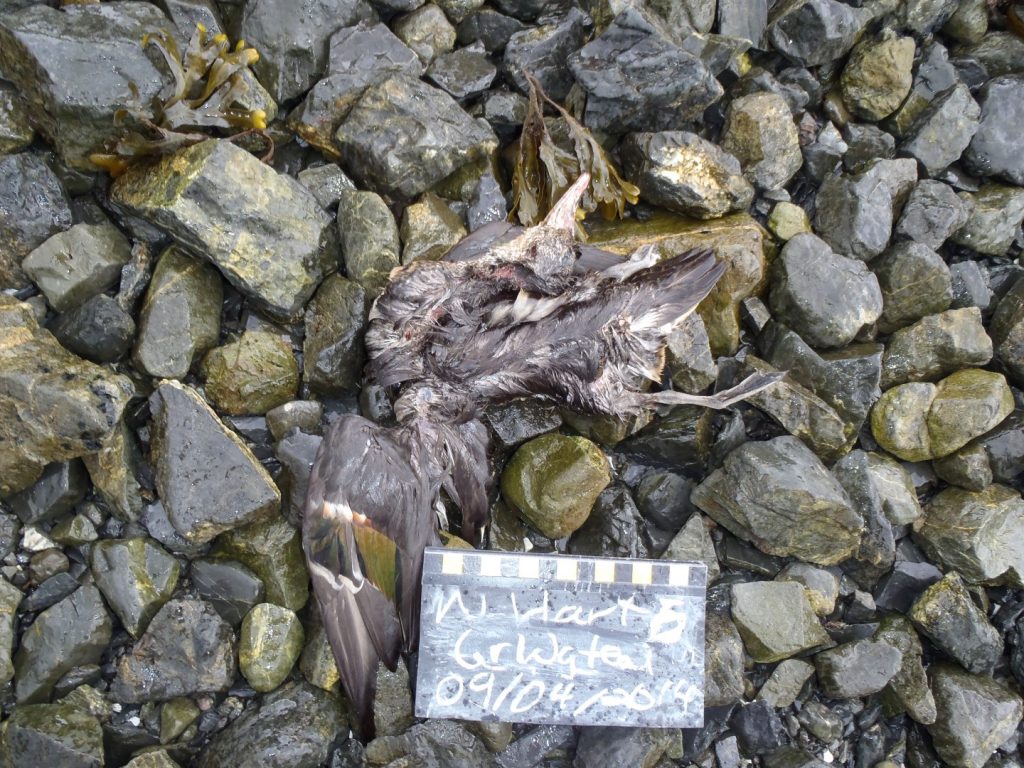
Bill: 37 mm, Wing: 18 cm, Tarsus: 32 mm
Charlotte found this bird at North Hartney Bay in Alaska on September 4.
Since the wing is well-profiled here, let’s use it.
Alaska Wing Key (page 44): Choose “w/ light or dark speculum and/or one or more white patches” (go to Q17), dark speculum (go to Q24), “green w/ buffy stripe above and white below” – bingo – Green-winged Teal.
West Coast Wing Key (page 33): Select “secondaries contrasting and dark” (go to Q18), “green w/ tan stripe above and white below” – Green-winged Teal.
West Coast Wing Table (page 32): We’re in the ”small” row. Pan across to “patch/speculum,” aka “like a patch but always found in the secondaries, often iridescent with lighter bordering stripes.” Two species: Pigeon Guillemot (PIGU – AL10-11), or Green-winged Teal (GWTE – WF7-8). The PIGU has a white upperwing patch, green in the upperwing? – Green-winged Teal.
Hank and Linda found this very small piece of plastic on their trial survey of the marine debris protocol. Fragments like these can wash-up in great numbers but easily overlooked and difficult to remove from the environment.
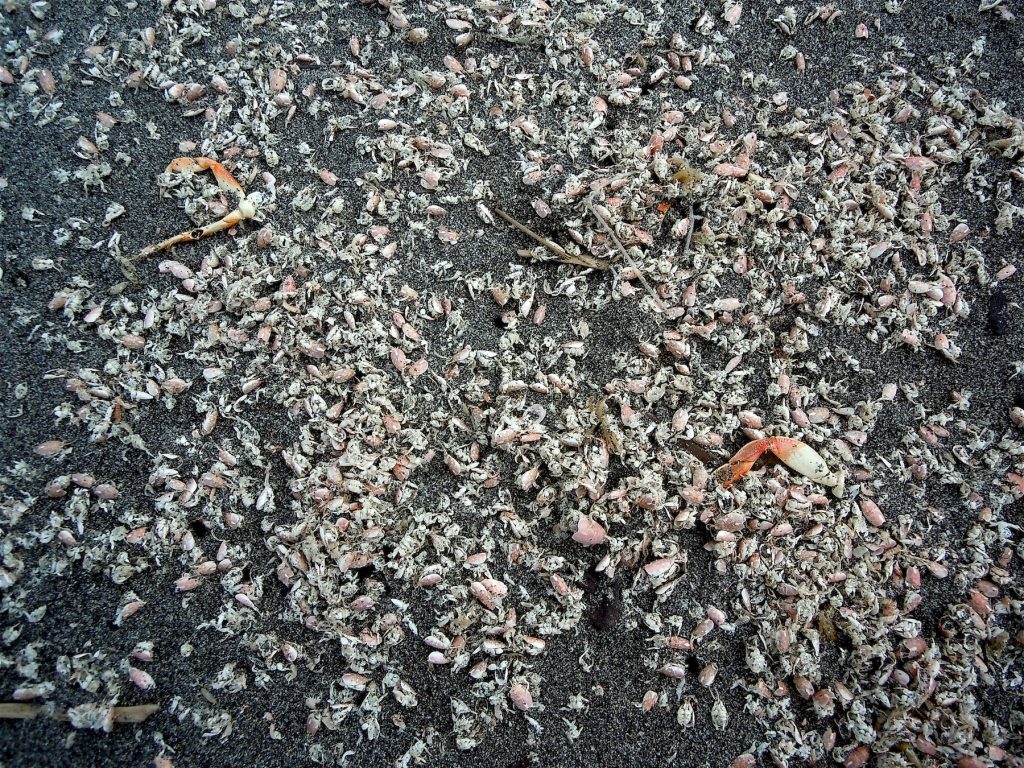
In July, Velella velella hit the shores big time, but for Stone Lagoon beach in California, a different story: Pacific Sand Crab (aka Pacific Mole Crab, or if you’re a bit more geeky, Emerita analoga). These burrowing crustaceans stick their rear into the beach and use their antennae to catch plankton and scrape it into their mouth.
Seen something like this on the beach you’ve always wondered about? Send us a photo!

